The dead nettle is not only an edible wild plant with healing properties, it also adorns natural home gardens with its diverse species and varieties. Propagating, planting and caring for the dead nettle proves to be surprisingly easy.
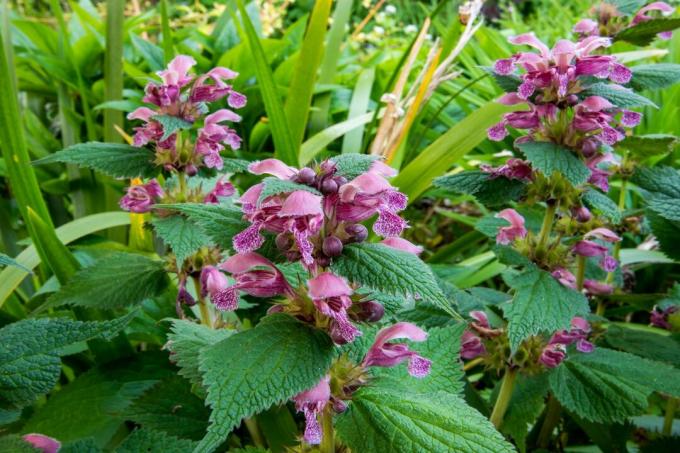
The Dead Nettle (lamium) is a diverse wild herb, which is also an eye-catcher in the garden all year round. It is a popular ingredient in the kitchen and medicine chest. The following article contains a profile of the dead nettle and gives tips on cultivation and care.
Contents
-
Deadnettle: flower, origin and properties
- Risk of confusion with the dead nettle
- Deadnettle as a weed
- The most beautiful deadnettle species and varieties
- Plant deadnettle
-
The right care
- irrigation
- Fertilize dead nettles
- diseases and pests
- Is the dead nettle hardy?
-
propagation
- Propagation by division of the root ball
- Propagation of dead nettle by cuttings
- Propagation of dead nettle by seeds
- Is dead nettle edible or poisonous?
- Use and effect of dead nettle
Deadnettle: flower, origin and properties
The dead nettle, which is found worldwide, belongs to the mint family (Lamiaceae). The name originally comes from the similarity of the leaves to stinging nettles, except that they have no stinging hairs, which makes them "deaf", so to speak. Other names for the dead nettle are cuckoo nettle, flower nettle and dead nettle.
Expert tip: dead nettle is very valuable for native insects
Sometimes the deadnettle is also called honey flower or sucker flower, as it is very popular with insects due to its abundant and sweet nectar. Due to the elongated flower shape, however, this is only accessible to insects with a long proboscis, such as bumblebees and butterflies. Wild bees like to collect deadnettle pollen, and the leaves serve as a meal for caterpillars.

The color of deadnettle flowers varies from white, yellow and purple to a deep crimson. The zygomorphic flowers form a calyx, the petals of which are fused into a smaller upper lip and a larger, partly patterned lower lip. The leaves are heart- to ovate-shaped and serrated at the edge. Another feature of the deadnettle is its square stem, on which the leaves are arranged opposite. The flowering period of the dead nettle begins in May and can sometimes be observed well into November. The propagation of lamiumspecies occurs either asexually via underground root suckers or sexually via seeds. Ants like to collect these because of the oily seed coat (elaiosome) and spread them along the way. Depending on the species, dead nettles grow herbaceous and herbaceous or only annual. Even in winter, the evergreen plant is an eye-catcher in the garden.

Risk of confusion with the dead nettle
There is a risk of confusing dead nettles with other plants in the case of the stinging nettle (Urtica), although the two plants are not even closely related. The leaves, which look similar at first glance, lead to confusion. Growth form, growth height and site requirements are also comparable. Often the two plants grow right next to each other.
What is the difference between stinging nettle and dead nettle? The well-known stinging hairs of the stinging nettle are not found on the dead nettle. Furthermore, the plants bloom completely differently. The small, inconspicuous yellowish-brown flowers of the stinging nettle are hardly noticeable, while the colorful and elegantly shaped flowers of the dead-nettle catch the eye. In addition, the plants smell completely different - the flowers of the dead nettle have a sweet scent, while the flowers of the stinging nettle are rather inconspicuous and herbaceous-tart.
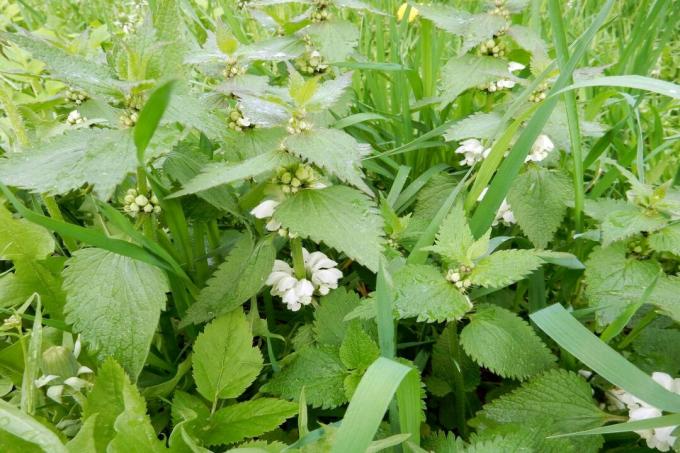
Deadnettle as a weed
Especially in agriculture, the dead nettle is considered a weed due to its rapid reproduction through runners. In the garden, they can quickly become rampant and suppress other plants if not kept in check.
As a wild herb, the plant also has advantages. Due to its undemanding location, it even settles in shady, unfavorable places, for example under bushes and hedges. There it forms a blooming and fragrant carpet that is not only beautiful to look at, but is also a popular source of food for wild bees and butterflies. The dead nettle is also used as a medicinal herb and in the kitchen.
To combat the spread of dead nettle, the redundant plants must be uprooted before they bloom. The soil should be thoroughly loosened and as many roots as possible must be removed, because a new dead nettle can grow from every root part. Planting in a bucket or creating a bed border also effectively limits the growth of dead nettles.

The most beautiful deadnettle species and varieties
The most beautiful deadnettle species can be found not only in the garden, but also in nature. Below you can get an idea of the most interesting deadnettles.
- White dead-nettle (Lamium album): The white-flowering deadnettle is very common and is often used as a medicinal plant. It grows perennial, up to 50 cm high and is hardy. In the garden it is often used as ground cover and underplanting, but it also thrives very well in pots.
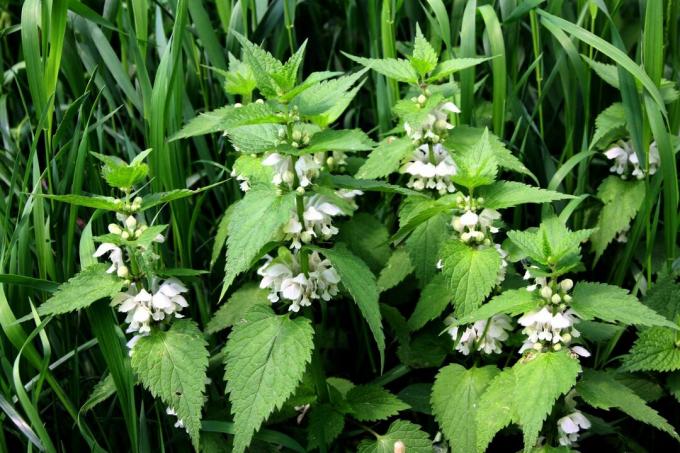
- Crimson Deadnettle (Lamium purpureum): The common, annual, herbaceous plant with crimson flowers has a violet leaf pattern and shimmers reddish. It grows up to 20 cm high and prefers sunny locations. The early flowering in spring provides food for all kinds of insects such as butterflies, bumblebees and wild bees.
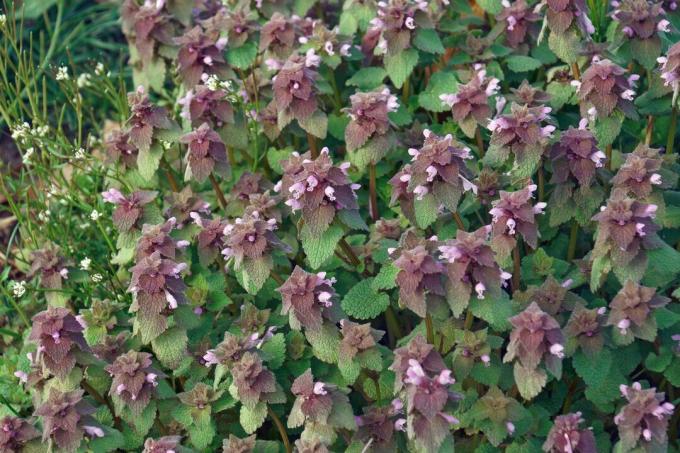
- Big deadnettle (Lamium orvala): With a height of up to 60 cm, the largest representative of the dead nettles is also called the nettle king. The 'Album' variety is a white-flowering, perennial and clump-forming perennial that grows upright. It prefers nutrient-rich soil in a partially shaded location.

- common golden nettle (Lamium galeobdolon): The yellow-flowering perennial grows up to 30 cm high and is used as ground cover or as a shade plant on the edges of trees. The golden nettle is edible and therefore a popular ingredient in the kitchen. The decorative, silvery pattern on the leaves is particularly pronounced in the rapidly spreading variety ˈFlorentinumˈ. The 'Hermann's Pride' variety, on the other hand, is somewhat slow-growing and the leaves are green-whitish with strong, dark-green leaf veins. The "silver carpet" variety also offers decorative, silvery patterned foliage.
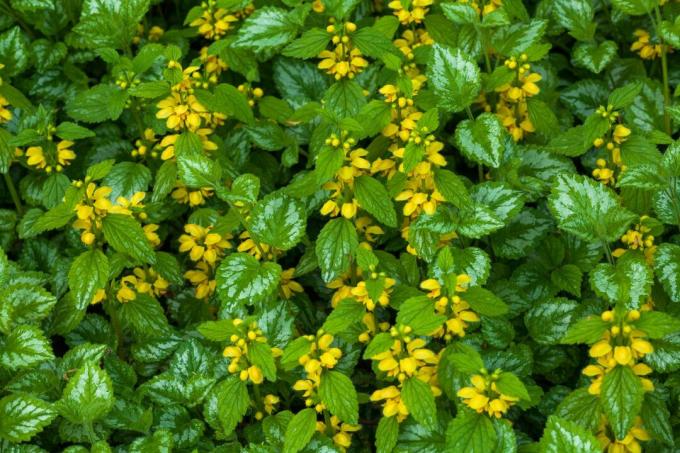
Tip: In the case of the silver-leaved dead-nettle (Lamium galeobdolon eg. argentatum) is a subspecies of the golden nettle, which - as the name suggests - has a silvery pattern on the leaves. It is often found under the name of the underlying species or sold as a cultivar of the same. An obsolete synonym is Lamium argentatum, since the subspecies was formerly thought to be a separate species.
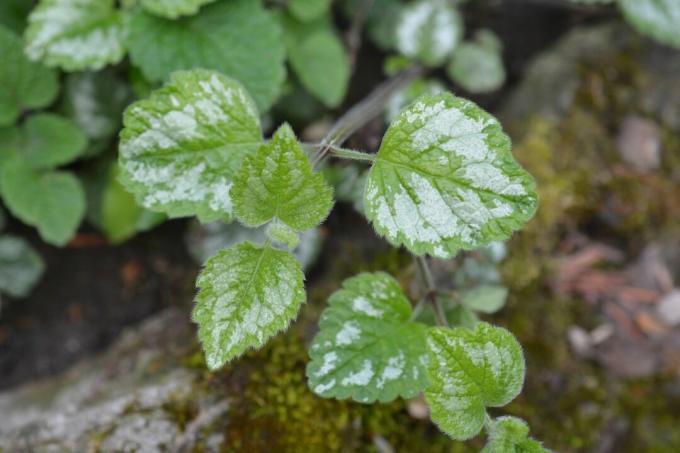
- spotted deadnettle (Lamium maculatum): The perennial, up to 25 cm high, has purple or white flowers, with the lower lip of the flowers being patterned. The leaves also partially show a pattern. It makes a good groundcover and underplanting, as well as a pot plant. Popular types are ˈAlbumˈ, ˈArgenteumˈ, ˈShell Pinkˈ or ˈWhite Nancyˈ.
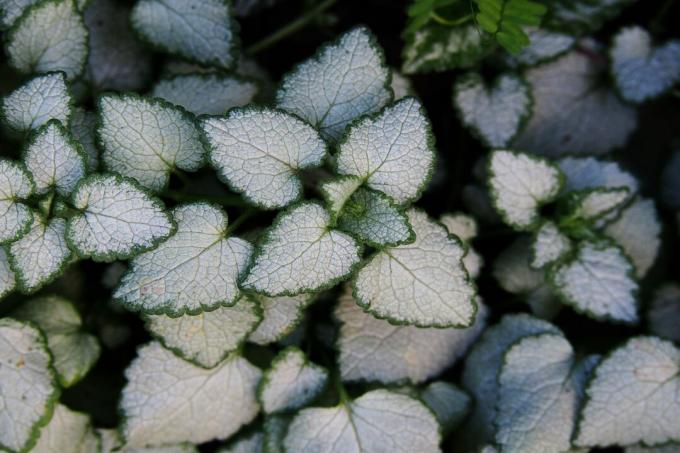
Plant deadnettle
Deadnettles are quite undemanding, robust plants. They prefer semi-shady to shady and, depending on the species, dry to fresh locations. Waterlogging, drought and all-day sun should be avoided. The deadnettle can be found in many different places in the garden, for example as a ground cover under bushes, trees and shrubs or on the edges of wooded areas. Since the dead-nettle a pointer plant for nitrogen, it thrives particularly well on humus-rich, nutrient-rich, fresh soil. The best time to plant deadnettles is in May and June, although it can be done throughout the growing season.
When planting in the bed, please note:
- The root ball of the dead nettle should be well watered before planting.
- The planting hole must be twice the size of the root ball.
- The garden soil can be upgraded with compost if necessary. Here, for example, ours is suitable Plantura organic compost, which is rich in nitrogen and very humic.
- The dead nettle is planted, pressed down well and watered sufficiently.
- Deadnettles generally like to be in groups and often cover larger areas.
- With a planting distance of 25 cm in groups of 10 or more plants, the dead nettle looks visually appealing.

Organic compost 40 L
- Ideal for all ornamental and useful plants with a high nutrient requirement and for raised beds
- For improved soil quality & healthy root growth
- Peat-free & climate-friendly: CO2-reduced organic soil made in Germany
If the dead nettle is to be planted in a pot or bucket, proceed as described above. Ours is also suitable for cultivation in pots Plantura organic compost, since compost, with its very good water and nutrient capacity, meets all the requirements of dead nettle.
Tip: With deadnettles in a pot, it makes sense to create an additional drainage layer in the lower area of the pot, for example with broken pottery, to prevent waterlogging.
The right care
The care of the dead nettle is quite uncomplicated, as it is a robust plant.
irrigation
In the bed, additional watering is only necessary in extremely dry conditions. In the pot, on the other hand, the plant should be watered regularly so that the soil is always kept slightly moist.
Fertilize dead nettles
In order to cover the nutrient requirements of the dead nettle in the long term, the soil must be naturally very rich in nutrients. Fertilization promotes optimum plant growth on normal or poor soil and in pots. Here, for example, ours is suitable Plantura organic universal fertilizer, but compost or manure can also be used. Our predominantly organic complete fertilizer preserves the soil humus, offers the dead nettle sufficient nitrogen and is animal-free and environmentally friendly - and you can harvest and use the dead nettle without hesitation, which is unfortunately not always the case when using animal manure.

Organic universal fertilizer 1.5 kg
- Ideal for a variety of plants in the garden & on the balcony
- Supports healthy plant growth and active soil life
- Animal-free organic slow-release fertilizer - safe for pets and garden animals
diseases and pests
In dead nettle, gray mold (Botrytis cinerea) appear. In order to prevent the spread of the fungal infection, the affected plants are removed. Aphids can also trouble the dead nettle. As a rule, however, treatment of the plant is not necessary: if you ensure healthy growth, then it is Deadnettle tough enough to give the so-called "insect pests" some of their rampant energy to deliver.
Do not despair if the deadnettle does not flower in the first year, most species do not flower until the second or third year.
Is the dead nettle hardy?
The dead nettle is hardy and easily survives temperatures down to – 30 °C. With potted plants, it still makes sense to protect the deadnettle from extreme minus temperatures with insulating material.

propagation
Once the dead nettle has settled in a location, it normally reproduces itself through seeds and root suckers. Targeted propagation can be achieved by dividing the root ball, cuttings or seeds.
Propagation by division of the root ball
- This is best done in the fall.
- Dig out a sufficiently sized ball with enough roots, stems and leaves.
- Dig a planting hole of sufficient size at the desired location.
- The ball is planted there at the same height and watered.
Propagation of dead nettle by cuttings
- The method is possible throughout the summer.
- Young deadnettle stems that are not flowering are cut off.
- Place the cuttings in a glass of water to root them.
- As soon as the first roots are visible, the dead nettle cuttings can be planted. It is recommended to plant 2-3 cuttings per seed pot.
- Ours is suitable for this Plantura Organic Herb & Seed Soil, as it optimally supports the root growth of the young plants. This is achieved through the loose and nutrient-reduced composition.
Propagation of dead nettle by seeds
- Collect the deadnettle seeds from summer through fall.
- The fine seeds are sown between March and June directly in the bed or in pots.
- Be sure to cover the seed only thinly with soil.
- The pots are set up somewhat sheltered outdoors. Germination occurs in spring.
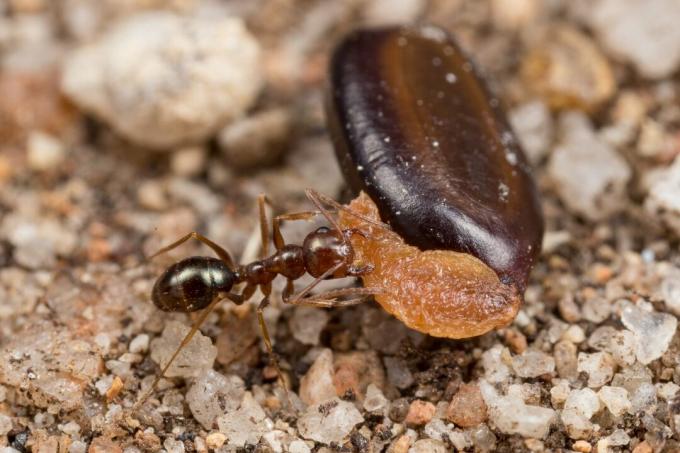
Tip: The easiest way to propagate is by dividing the root ball. Propagation via cuttings is also practical - especially if you want to grow several plants at the same time. Propagating dead nettle seeds is a little more difficult and requires patience.
Is dead nettle edible or poisonous?
Deadnettle can be grown in the garden without hesitation as all parts of the plant are non-toxic. This edible wild herb is also popular in the kitchen as well as in natural medicine.
Use and effect of dead nettle
In naturopathy, dead nettle is used for respiratory, skin and digestive problems, gynecological problems and for wound healing. Due to the essential oils, tannins, glycosides, saponins and mucilage contained in the plant, it has an expectorant, detoxifying and haemostatic effect. The flowers are mainly used for application, but the leaves and shoot tips are also used. The parts of the plant are dried and then used internally or externally, for example as a tea or poultice. Deadnettle tea is popular for coughs and sores in the mouth and throat, while deadnettle poultices are good for relieving skin irritations.
Deadnettle is used in a variety of ways in the kitchen. The young leaves taste spicy and nutty and are often used in salads, soups or as steamed vegetables. The flowers, with their sweet note and beautiful color, are also eye-catchers in salads and as a decoration for desserts. The deadnettle is not only suitable for the human kitchen - our pets such as rabbits, guinea pigs and turtles are also big fans of the deadnettle as a fodder plant.
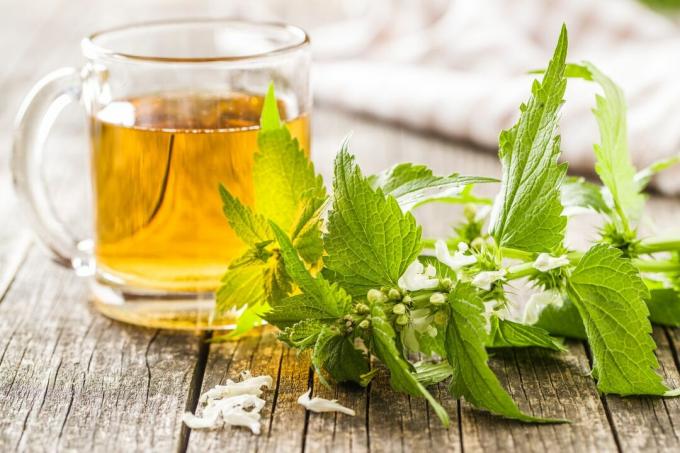
The dead nettle is a well-suited and easy-care plant for a natural garden with many possible uses. It also combines well with other plants such as the Boysenberry combine, which is also an excellent pasture for bees.
Register now for the Garten-Post and receive great tips, seasonal trends and inspiration on everything to do with the garden from our expert every week.



